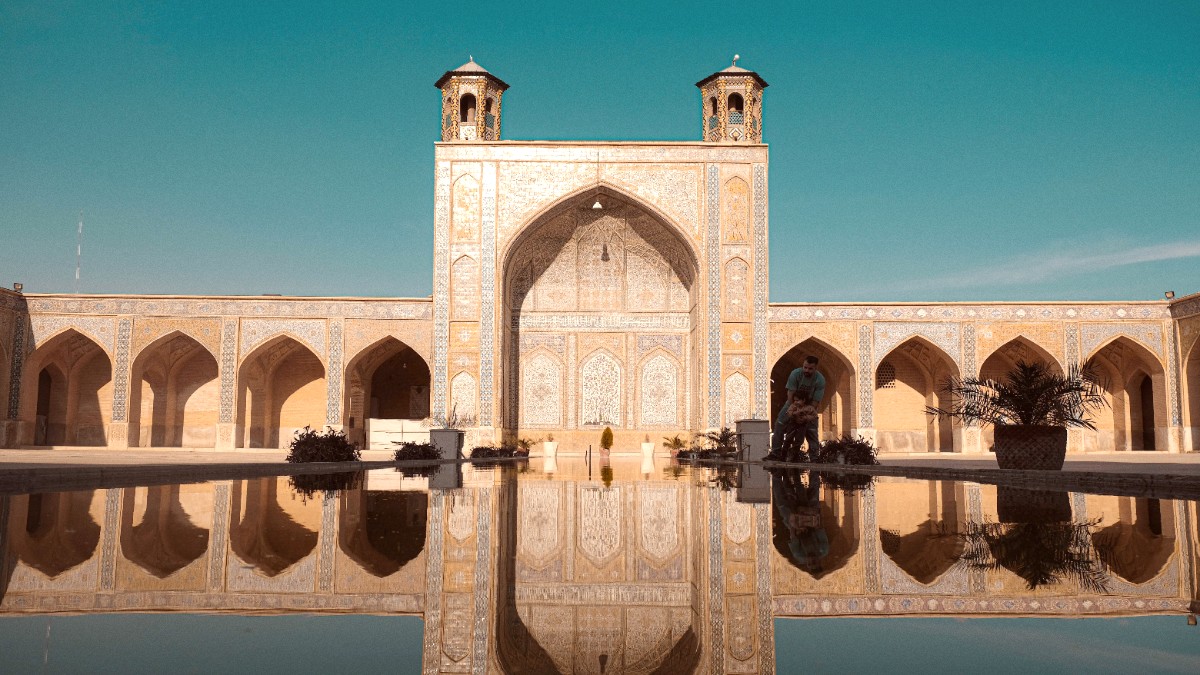
Iran
Discover a place where every corner tells a story, and Persian culture flourishes in its most graceful form.
Shiraz offers a complete experience, from the serenity of its gardens and the spiritual calm of its shrines to the historical grandeur of nearby Persepolis.
The city provides a direct connection to a glorious past and a present.
Shiraz is positioned in the southwest of Iran, within the vast Fars Province. It sits nestled in the mountainous embrace of the Zagros Mountains, featuring a stunning natural setting. The city occupies a fertile valley, approximately 1,500 meters (4,900 feet) above sea level. A seasonal river, the Rudkhaneye Khoshk (Dry River), runs through the city, remaining dry for most of the year but transforming after winter rains.
The geographical placement of Shiraz shapes its climate, making for pleasant spring and autumn seasons, hot dry summers, and cool winters. The surrounding mountains offer scenic views and opportunities for outdoor activities, especially hiking. This valley setting also historically supported rich agricultural land, contributing to the city's prosperity and its fame for produce like grapes and citrus fruits. The natural beauty surrounding Shiraz contrasts pleasantly with its historical cityscapes, inviting exploration beyond the urban core.
Fars Province, Southwest Iran
Approx. 1,500 meters (4,900 feet) above sea level
Zagros Mountains
Rudkhaneye Khoshk (seasonal Dry River)
Hot, semi-arid
Shiraz is among Iran's most ancient cities, a center of Persian culture for more than 2,000 years. Its history is long and rich, marked by periods of great influence and artistic flourishing. The city gained particular prominence during the Zand Dynasty, serving as the capital of Iran from 1751 to 1794 under Karim Khan Zand. This period saw the construction of many of the city’s prominent landmarks, including the Arg-e Karim Khan, the Vakil Bazaar, and the Vakil Mosque, which remain central to its identity today.
The city holds deep respect as the birthplace and resting place of two of Persian literature's most revered poets: Hafez and Saadi. Their mausoleums, Hafezieh and Saadieh, are not just tombs but living monuments where Iranians gather to read poetry, reflect, and celebrate their literary heritage.
Shiraz serves as the main gateway to the ancient Achaemenid capitals of Persepolis and Pasargadae. These UNESCO World Heritage Sites are colossal reminders of the Persian Empire's grandeur, linking Shiraz directly to the earliest and most powerful dynasties of ancient Iran. This connection reinforces Shiraz's standing as a cornerstone of Persian history and culture.
Shiraz's historical connection to wine production, though now a historical note due to modern prohibitions, further underscores its agricultural abundance and cultural depth. The city's association with flowers, specifically roses, is another hallmark of its aesthetic and cultural heritage.
Shiraz is a bustling city, ranking as the fifth most populous in Iran. Its population stands at approximately 1.5 million residents, based on 2023 estimates.
The city's economy benefits from its fertile land and strategic location. This agricultural abundance helps shape the local cuisine and the daily life of its residents. Shiraz also has a growing industrial sector, including plants producing cement, sugar, and textiles. The city serves as a major trade center, handling local handicrafts, traditional carpets, and electronic components.
Known for grapes, citrus, and a rich culinary tradition stemming from its fertile valley.
Cement, sugar, textiles, handicrafts, and electronics contribute to a diverse economy.
A significant portion of the economy stems from visitors supporting local businesses and services.
Its popularity as a tourist destination supports a range of hotels, restaurants, and tour services, providing numerous opportunities for local businesses and individuals.